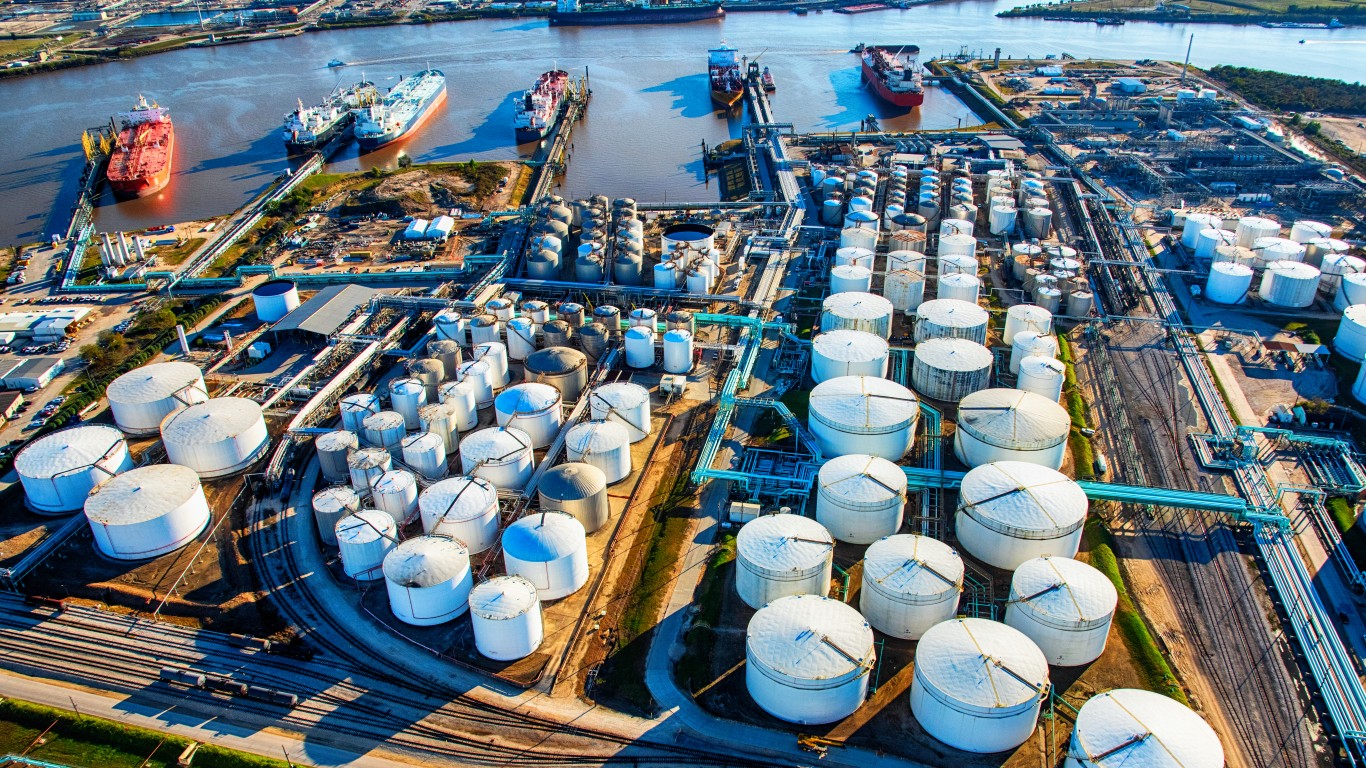Health and Healthcare
Watchdogs Implying Higher Oil Prices and Oil Stocks Look Premature

Published:

Hearing that the Pfizer/BioNTech COVID-19 vaccine looks to be more than 90% effective in the fight against the spread of the disease was wonderful. The stock market surged, particularly the “reopening of America” stocks, those that have storefronts and require people to show up in person. One additional beneficiary was the oil industry, as crude jumped from under $38 per barrel to above $42 in futures as a result of an expected gain in oil demand in 2021.
This week’s strong move in oil prices also created a massive rally in oil stocks, but the International Energy Agency (IEA) has warned that moves may be very premature. The agency has warned that crude oil’s gain off of a vaccine being able to reopen the world economy further and to boost oil demand might not be realized until late in 2021.
Chevron Corp. (NYSE: CVX) closed at $71.19 last Friday, but then rose to $79.40 on Monday and again on Tuesday to close at $83.07, for a total two-day gain of almost 17%. That is not normal, and the moves elsewhere (see below) were even greater.
Most IEA monthly updates are based on current events and expectations about what will happen. These outlooks can have an impact on the markets, but often they are brushed over or sloughed off. The problem with this report is that the IEA still does not expect there will be a significant impact on oil demand and market prices during the first half of 2021.
While news of a successful vaccine is great, there are many issues. First, the vaccine has not been given its final review yet. It also has not seen any regulatory approval, and it has to be sent around the world and America before it can be used. Even then, it takes time for the vaccine to kick in and be effective.
Another issue to consider, on top of new lockdowns being implemented in Europe, is that a key Biden advisor has suggested that the United States could need a lockdown of four to six weeks to stop the major rise in coronavirus cases and to rekindle the economy thereafter.
According to the IEA, global energy demand would need to return from a daily estimate of about 91 million barrels per day to almost 100 million pre-pandemic levels before prices should rise back up. The IEA may not be factoring in that markets are supposed to discount certain events and look into the coming months for price discovery, but another U.S. lockdown was not factored into this week’s major rally.
The newer IEA outlook does not expect the major demand and price recovery to happen until later in 2021. It also pointed out that production has been recovering in the United States, as well as in Libya and Iraq. Basic economics teaches that higher supply equals lower prices, in a vacuum.
Another issue is that the OPEC+ oil-producing nations so far have been sticking with agreed upon supply cuts from earlier this year, when COVID-19 caused the world economy to come screaming lower. Are there any guarantees and assurances that those production cuts will last?
Exxon Mobil Corp. (NYSE: XOM) was booted out of the Dow Jones industrial average earlier in 2020, and many investors are still trying to decide how they want to treat that 9.5% dividend yield. Despite a drop of 1.4% to $35.95 a share on Thursday, last Friday’s close of $32.01 saw a gain of 19% before coming back down, and this week’s dividend payment was reflected in the stock.
Occidental Petroleum Corp. (NYSE: OXY) saw its shares rise from roughly $10 to as high as about $12.70 on this week’s news, more than a 25% gain. Occidental shares were back at $11.83 on Thursday morning.
Huge gains also were seen in overseas oil giants. BP PLC (NYSE: BP) saw its American depositary shares rise from about $15.70 to a peak of $19.60 this week. BP was last seen back down at $18.75, but this was nearly a 25% gain.
Oil services companies also saw big recoveries on Monday and this week before giving back some gains. Schlumberger N.V. (NYSE: SLB) was last seen down about 1% at $17.55 on Thursday, but last Friday’s close of $15.22 went as high as $18.91 this week, for a trough to peak gain of 24%, before profit-taking and reality came into play.
Baker Hughes Co. (NYSE: BKR) was last seen down over 1% at $17.40 on Thursday, but last Friday’s close of $15.57 had shown an 18% gain to $18.44, before the profit-taking.
Oilfield equipment has endured a tough 2020 and that may be expected for some time as oil companies are still lowering capital spending plans for 2020 and 2021 rather than increasing them. What spending they are doing, they are pinching every penny they can. National Oilwell Varco Inc. (NYSE: NOV) was last seen up 0.9% at $10.80 on Thursday morning, but its peak of $11.91 earlier this week was up a sharp 32% from last Friday’s $9.00 close.
These were just the gains in the oil leaders. The gains were even greater in some of the other more troubled players, but some of the pullbacks likely will be more extreme if the IEA expectations actually come to be.
There is no doubt about it that a COVID-19 vaccine and better treatments will greatly help the global economy. It is just nowhere close to helping at this point, and it may be well into 2021 before vaccines and additional treatments are widely available.
Thank you for reading! Have some feedback for us?
Contact the 24/7 Wall St. editorial team.